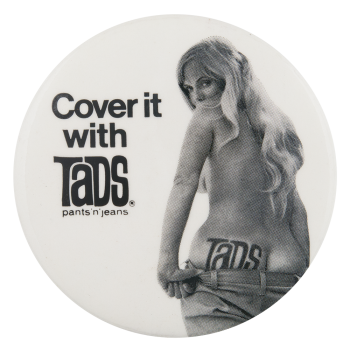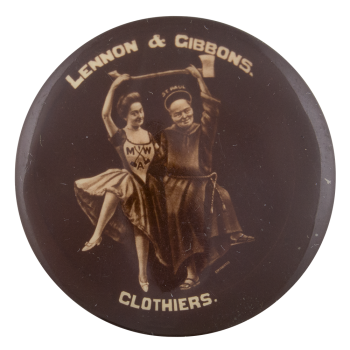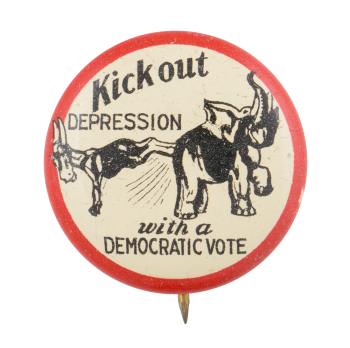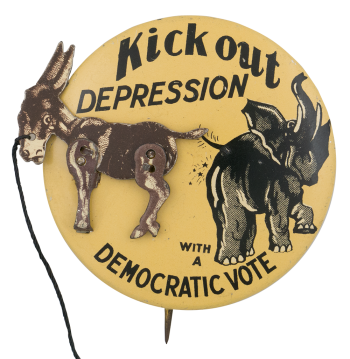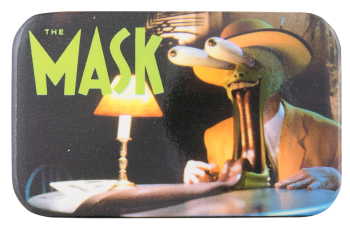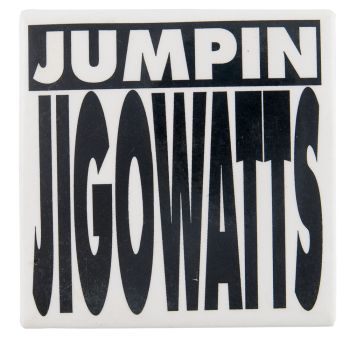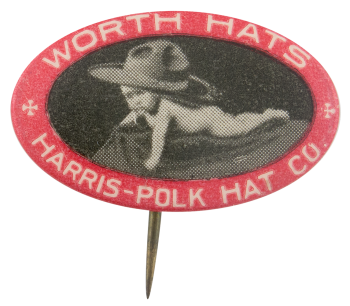Cover it with Tads
| Category | |
|---|---|
| Additional Images | |
| Sub Categories | |
| Text on Button | Cover it with Tads pants n' jeans |
| Image Description | Black text and a black and white photograph of the back of a shirtless woman looking over her shoulder |
| Back Style | |
| The Shape | |
| The Size | |
| Year / Decade Made | |
| Additional Information | Tads Pants and Jeans was a clothing brand from the 1970s. Tads was a subsidiary of the parent company H.R. Kaminsky & Sons, based out of Fitzgerald, Georgia. The "Cover it with Tads" campaign was developed by a Florida-based advertising agency and featured Florida model Mary Clark. The semi-nude photo appeared in print ads in both women’s fashion magazines and in certain adult magazines. In addition to the print advertising campaign, the signature image of Clark also appeared on buttons, stickers, and posters. For a time, Kaminsky & Sons included the image on their official company letterhead. |
| Catalog ID | AD0379 |

